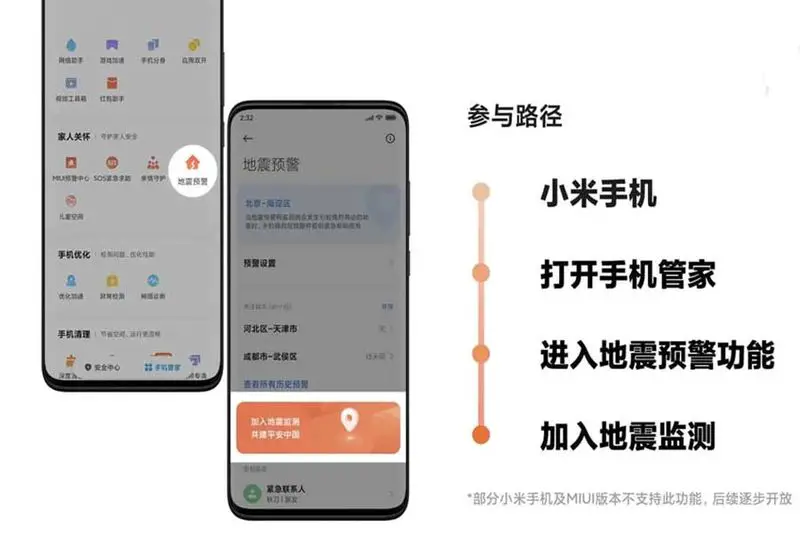The sensors integrated into Xiaomi’s smartphones will be given a very useful parallel life, which is to help detect seismic waves, prevent earthquakes and monitor them for science.
We have known for some time that Xiaomi was preparing an earthquake warning system integrated into its smartphones, and in a few days in which we have seen the Chinese giant show extravagant designs and patents, in addition to its 200W HyperCharge, it was logical to also show progress in a function that will save lives very soon thanks to mobile sensors and artificial intelligence.
The feature is already available in 25 provinces in China serving as a personal earthquake early warning option, which has already warned of more than 35 earthquakes above magnitude 4.0 on the Richter scale.
Now, Xiaomi they announce to us that they will not only warn earthquakes, but their smartphones will be able to help monitor them thanks to the low power sensor that is integrated into most of their phones to detect seismic waves, using an AI algorithm that will calculate the seismic information saving monitoring costs and greatly increasing the systems that scientists will have available for this type of research.

Xiaomi’s earthquake early warning system is also advancing, and will now allow not only detecting earthquakes but also monitoring them in real-time using AI algorithms.
According to the developers of the Haidian firm, the national earthquake monitoring network will be more complete than ever thanks to MIUI system users, who will be able to serve data directly from multiple points to help in prevention, research, and rescue in this type of natural disasters.
The new option is already arriving transparently to most Xiaomi devices and its sub-brands in China and can be activated in a very simple way from the settings, in the “Earthquake Alert” function, activating the selector to join the monitoring system voluntarily.
The development has been carried out by Xiaomi and the Chengdu High-Tech Disaster Mitigation Research Institute, with very complex algorithms that do not always provide accurate predictions surely due to the lack of measurement points, which Xiaomi will now offer by the hundreds of thousands.
How do these earthquake warning systems work?
Well, in case you have been left with the doubt, we do not want in TechBriefly that you leave without all the information, so we are going to leave you some brushstrokes very above how these earthquake prediction systems work, without pretending to be rigorous but only that you take some more knowledge.
These systems seem simple although the algorithms are extremely complex since they simply use the time difference between the propagation waves to make predictions. Longitudinal waves are faster, while transverse waves arrive slightly slower, so you can calculate and work with the relationship between them.
Longitudinal waves are relatively harmless and arrive first, while transverse and surface waves are more destructive and can be predicted. However, the biggest problem is that these waves arrive from deep in the earth and move very fast, so warnings are usually only a few seconds.
In any case, scientific studies show in countries where earthquakes are frequent that a warning of only 3 seconds reduces the casualty rate by 14%, while 10 seconds reduces it by 39% and 20 seconds or more by up to 63%… Perhaps this makes it easier to understand that a smartphone can help save a life, or not?





